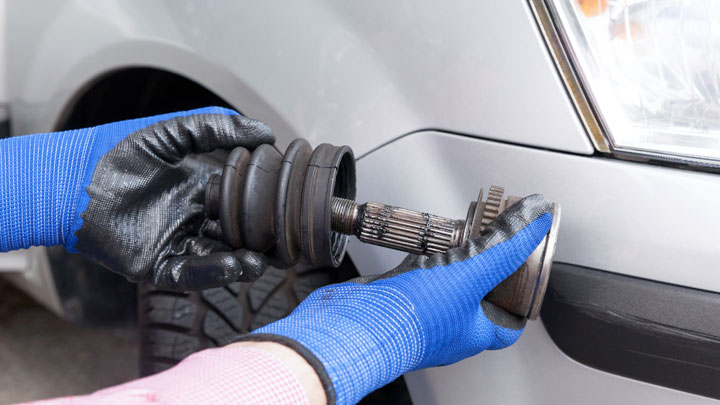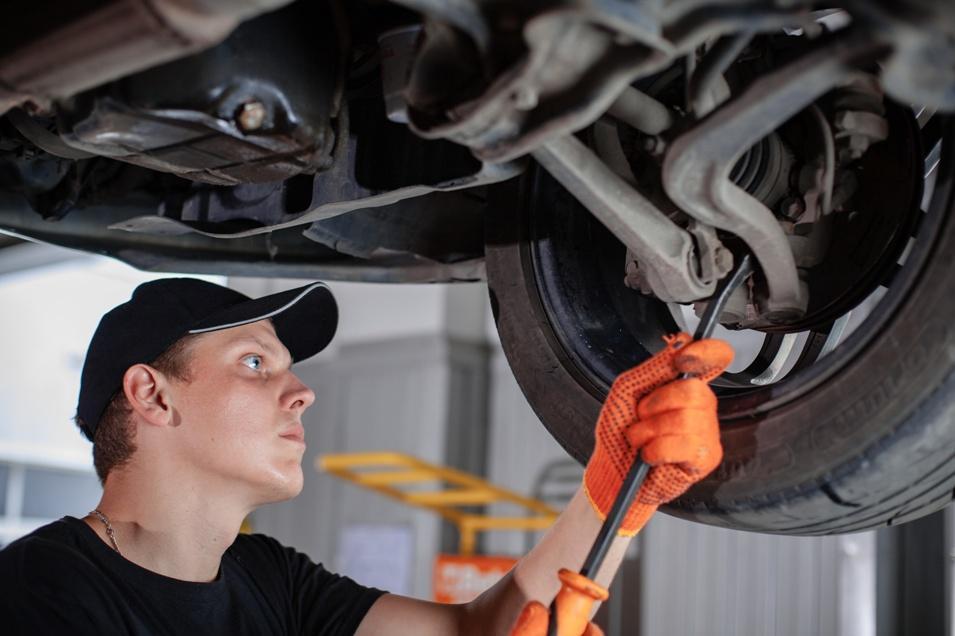Your Vehicle’s Steering System

Imagine sitting in your vehicle at a traffic light. Your engine is idling, and you are preparing to make a left turn. The left turn arrow turns green and as you go to make the left turn, nothing happens. Your vehicle does not turn even as you forcefully try to steer the vehicle left.
Your vehicle’s steering system is a critical function of driving, and without it you are unable to operate your vehicle. Steering is a necessity as well as a safety concern.
In this month’s blog, we review the steering system and some typical issues that you may experience.
How does your steering system work?

- Your vehicle’s steering system is a complicated set of functions that starts with your hand movements on the steering wheel.
- Your turning motions on the wheel connect to the steering shaft, which is housed inside the steering column, a hollow set of steel tubes.
- Eventually, the motion of the shaft creates motion down the line to the gears, or pinions, which transfer power to the rack, and then to the tie rods and steering knuckles that turn your wheels in the proper direction.
The above description of how your vehicle steers is oversimplified but what’s helpful to know is that your vehicle’s steering is subjected to a lot of regular wear and tear through constant use. This wear and tear can cause eventual damage or failure of key components of the steering system.
Let’s look at two of the more common components that are impacted by wear and tear.
The CV Axle

The CV (Constant Velocity) axle is a component of your drive train but has direct impact to your vehicle’s steering ability. The CV Axle is what transfers torque from your vehicle’s transmission to the wheels. When there is a problem with the CV axle, it can affect your steering.
Some common symptoms of a bad CV axle include:
- While turning the vehicle you hear a clicking sound.
- Grease leaks found on the sides of the tires.
- Intense vehicle vibration during turns and accelerating/decelerating.
The CV axle has rubber boot covers, which protect the joints. When these boot covers are worn or damaged, they may leak grease. It is important to have them inspected for damage and to make sure that the axle is lubricated well with grease.
The Tie Rods

The tie rod ball joint transfers steering power to each wheel. There are inner and outer tie rods, which can become damaged or worn because of the road conditions and normal wear and tear.
The symptoms to look or listen for with a bad tie rod include:
- Noise, such as squealing, when turning the vehicle
- Unusual wearing on the tires
- Steering wheel problems, such as difficulty turning it
- Vehicle vibration
It is important to inspect tie rods and the ends for any damage and to also lubricate them periodically.
Maintenance

Keep your steering system working by having it serviced on a maintenance schedule.
Steering maintenance may include:
- Visual inspection of steering components
- Grease and lube critical parts
- Checking and replacing the fluid once in every 5,000 kilometers.



